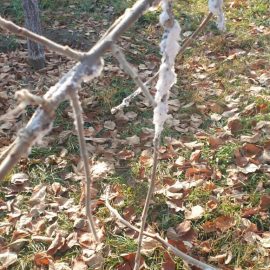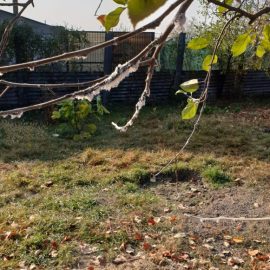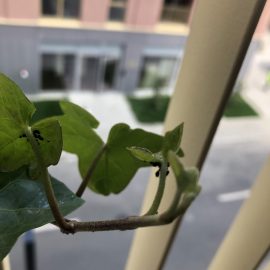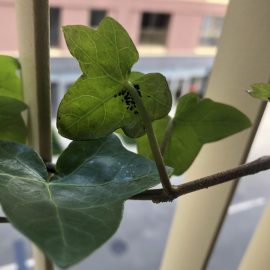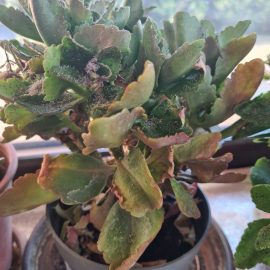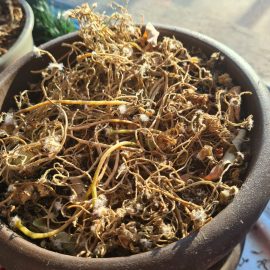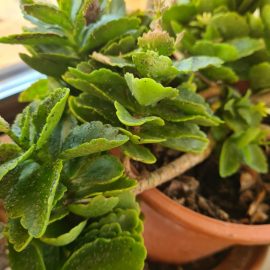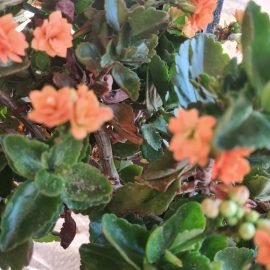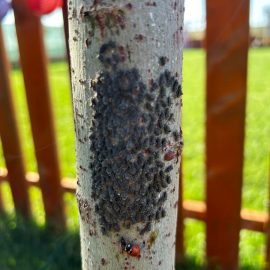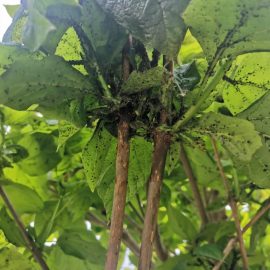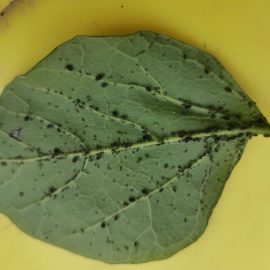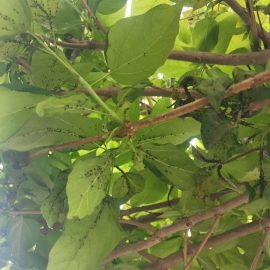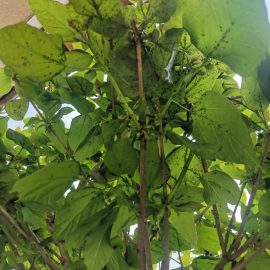Aphids – pest management
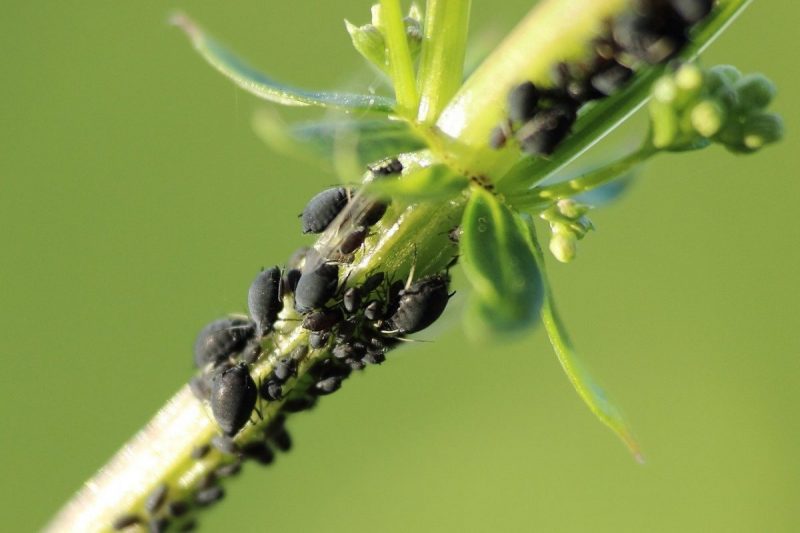
The most common species of aphids that can affect plants are:
1. The greenbug or wheat aphid – Schizaphis graminum
Prevalence. The wheat aphid, Schizaphis graminus, is a very widespread insect in the world. This pest causes significant damage to cereal crops.
Description. The aptery forms have an oval body, 1.5-2 mm long, light green or yellow. The winged forms have a body of 1.2-1.9 mm in length, with a brown head, brown thorax, and a green abdomen.
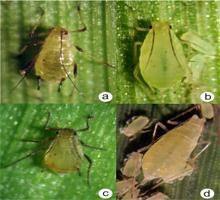
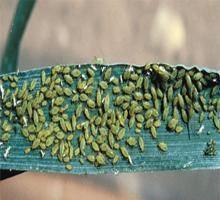
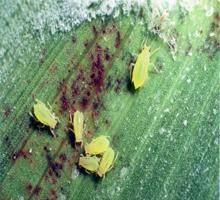
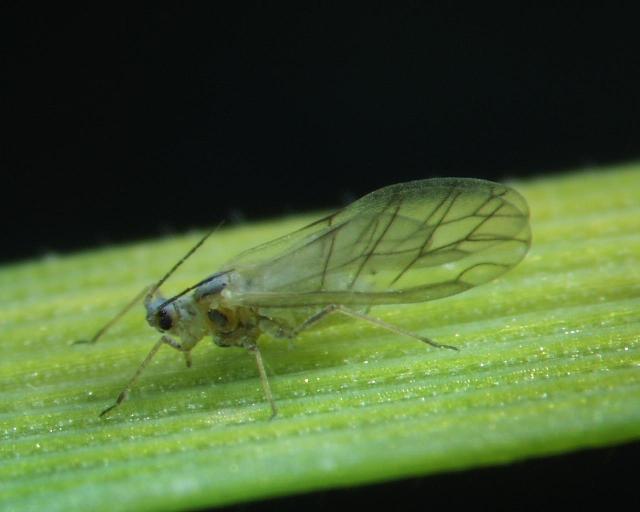
Biology and ecology. The wheat aphid is a species that overwinters in the egg stage, laid by females in autumn, on wheat, barley grass, sorghum, corn, or other spontaneous grasses. A female can lay from 1 to 6 eggs. In some countries, the species produces 21-23 generations per year.
Damage. This pest attacks cultivated grasses, especially wheat and barley on which they develop numerous colonies on the leaves. It also attacks spontaneous grass species. Following the attack, the leaves twist. In the stung areas, reddish spots appear initially, which then merge, gradually covering the entire leaf. Finally, the plant wilts.
Management. In order to control the wheat aphid, treatments with specific insecticides must be carried out.
Recommended products
-
You can find products on a different store
Change Store -
You can find products on a different store
Change Store -
You can find products on a different store
Change Store -
You can find products on a different store
Change Store -
You can find products on a different store
Change Store -
You can find products on a different store
Change Store -
You can find products on a different store
Change Store -
You can find products on a different store
Change Store -
You can find products on a different store
Change Store -
You can find products on a different store
Change Store -
You can find products on a different store
Change Store -
You can find products on a different store
Change Store -
You can find products on a different store
Change Store -
You can find products on a different store
Change Store -
You can find products on a different store
Change Store -
You can find products on a different store
Change Store -
You can find products on a different store
Change Store -
You can find products on a different store
Change Store -
You can find products on a different store
Change Store -
You can find products on a different store
Change Store -
You can find products on a different store
Change Store -
You can find products on a different store
Change Store -
You can find products on a different store
Change Store -
You can find products on a different store
Change Store
2. The English grain aphid – Macrosiphum avenae
Distribution. The English grain aphid is a pest widespread worldwide. It is one of the most damaging species for straw cereals.
Description. The aptery forms have a green-yellow body, 2-2.8 mm long, with black antennae and yellow legs. The winged forms have transparent and membranous wings, the head and thorax are reddish-brown, and the abdomen is green, decorated laterally with blackish spots.
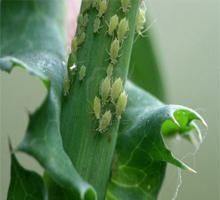
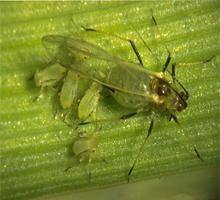
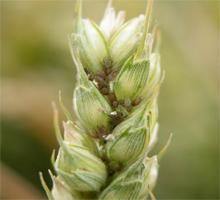
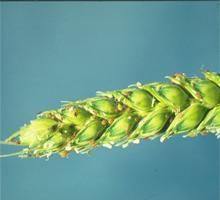
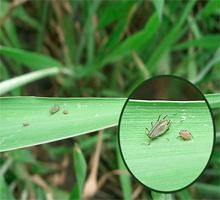
Biology and ecology. The English grain aphid overwinters in the egg stage in cultivated or spontaneous grasses. In spring, the fundatrix form hatches from the winter egg, then the aptery or winged forms. From there, after several parthenogenetic and viviparous generations, towards autumn, the sexuparous forms appear, from which the sexed form’s result (males and females).
Damage. Species are known to be harmful to crops of oats, barley grass, wheat, rye, rice, or grasses of spontaneous flora. Aphid colonies can be found on young leaves, stems, or spikelets. They sting and suck the intracellular fluid. Following the attack, the plants no longer develop, and the attacked areas discolor and wither.
Management. To control the English grain aphids, treatments with specific insecticides must be performed.
Recommended products
-
You can find products on a different store
Change Store -
You can find products on a different store
Change Store -
You can find products on a different store
Change Store -
You can find products on a different store
Change Store -
You can find products on a different store
Change Store -
You can find products on a different store
Change Store -
You can find products on a different store
Change Store -
You can find products on a different store
Change Store -
You can find products on a different store
Change Store -
You can find products on a different store
Change Store -
You can find products on a different store
Change Store -
You can find products on a different store
Change Store -
You can find products on a different store
Change Store -
You can find products on a different store
Change Store -
You can find products on a different store
Change Store -
You can find products on a different store
Change Store -
You can find products on a different store
Change Store -
You can find products on a different store
Change Store -
You can find products on a different store
Change Store -
You can find products on a different store
Change Store -
You can find products on a different store
Change Store -
You can find products on a different store
Change Store -
You can find products on a different store
Change Store -
You can find products on a different store
Change Store
3. The corn aphid – Rhopalosiphum maidis
Distribution. The corn aphid is an insect widespread on the entire globe.
Description. The aptery forms of these aphids have an elongated body, light green or light blue, 1.8-2.2 mm long. The length of the body is twice as big as the width. The winged forms are 1.7-2.2 mm long, with a black head and black thorax. The abdomen has shades of green and areas that are darker colored.
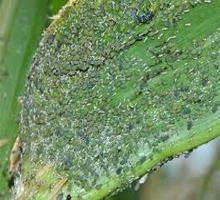
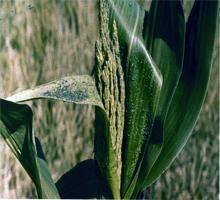
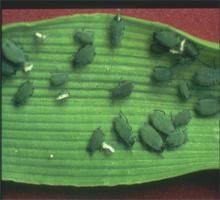
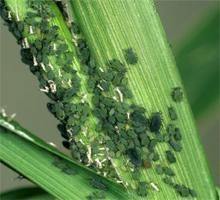
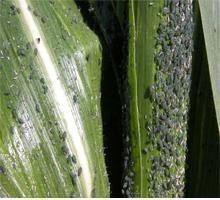
Biology and ecology. The number of produced generations can be between 9 and 45 or even 50 per year, in laboratory conditions.
Damage. The corn aphid is a species that can be found on corn and other grasses (sorghum, wheat, barley grass, etc.), developing colonies on leaves, spikes, or panicles and possibly on corn cobs. Because of the way they feed (stinging and sucking the intracellular fluid from the attacked organs), the leaves of the attacked plants often twist in a conical shape, interrupting their normal development. Following the attack, an increased amount of carbohydrates accumulates in the leaves, followed by the synthesis of anthocyanin pigments (a characteristic phenomenon of the attack). As a result, the leaves or stems turn red.
Management. In order to control the corn aphids, it is recommended to carry out treatments with specific insecticides.
Recommended products
-
You can find products on a different store
Change Store -
You can find products on a different store
Change Store -
You can find products on a different store
Change Store -
You can find products on a different store
Change Store -
You can find products on a different store
Change Store -
You can find products on a different store
Change Store -
You can find products on a different store
Change Store -
You can find products on a different store
Change Store -
You can find products on a different store
Change Store -
You can find products on a different store
Change Store -
You can find products on a different store
Change Store -
You can find products on a different store
Change Store -
You can find products on a different store
Change Store -
You can find products on a different store
Change Store -
You can find products on a different store
Change Store -
You can find products on a different store
Change Store -
You can find products on a different store
Change Store -
You can find products on a different store
Change Store -
You can find products on a different store
Change Store -
You can find products on a different store
Change Store -
You can find products on a different store
Change Store -
You can find products on a different store
Change Store -
You can find products on a different store
Change Store -
You can find products on a different store
Change Store
4. The cabbage aphid – Brevicoryne brassicae
Distribution. The cabbage aphid, Brevicoryne brassicae, is a species widespread in all parts of the world.
Description. The aptery form of these aphids has a spherical body, 2.1-2. 6 mm long, yellow-green, covered with a waxy white-gray secretion. The winged form is smaller, 1.9-2 mm long. The head and thorax are dark browns. The yellow-green abdomen is decorated with a row of spots on the sides and a few darker central transverse stripes.
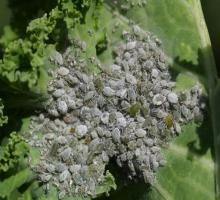
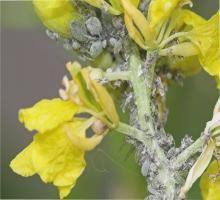
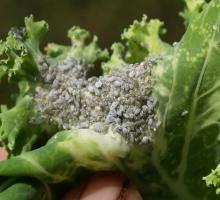
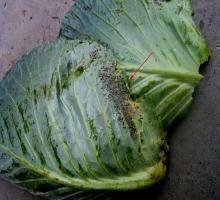
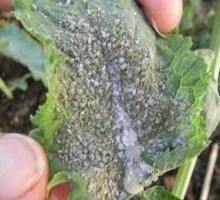
Biology and ecology. The cabbage aphids overwinter in the egg stage on the stems or petiole of cabbage leaves or other cultivated and spontaneous Cruciferous vegetables. Under normal conditions, from March to October, they produce up to 18 generations.
Damage. It is a migratory species and grows on various cruciferous plants, of which the most often attacked are cabbage, cauliflower, kohlrabi, radish, rapeseed, etc. On these plants, they develop crowded colonies, sometimes completely covering the leaves, shoots, and siliques. As a result of their stings, the leaves turn yellow, twist slightly, and dry out. When the attack takes place on seedlings, the plants stagnate and dry out.
Management. In order to control the cabbage aphid, specific insecticide treatments have to be carried out.
Recommended products
-
You can find products on a different store
Change Store -
You can find products on a different store
Change Store -
You can find products on a different store
Change Store -
You can find products on a different store
Change Store -
You can find products on a different store
Change Store -
You can find products on a different store
Change Store -
You can find products on a different store
Change Store -
You can find products on a different store
Change Store -
You can find products on a different store
Change Store -
You can find products on a different store
Change Store -
You can find products on a different store
Change Store -
You can find products on a different store
Change Store -
You can find products on a different store
Change Store -
You can find products on a different store
Change Store -
You can find products on a different store
Change Store -
You can find products on a different store
Change Store -
You can find products on a different store
Change Store -
You can find products on a different store
Change Store -
You can find products on a different store
Change Store -
You can find products on a different store
Change Store -
You can find products on a different store
Change Store -
You can find products on a different store
Change Store -
You can find products on a different store
Change Store -
You can find products on a different store
Change Store
5. The green apple aphid – Aphis pomi
Distribution. It can be found in all regions, from the steppe area to the mountainous regions.
Description. The aptery specimens of thee aphids have a pear-shaped body, 1.5-2 mm long, green or green-yellow, with a yellow or blackhead. The winged forms have a 2-2.5 mm long body with a blackhead, black antennae and thorax, and a green abdomen. The young larvae have a flattened dorsoventral body, yellow in color, while the second stage larvae have the abdominal extremity covered with a filamentous waxy secretion. The egg is elliptical, green when laid, then becomes shiny black.
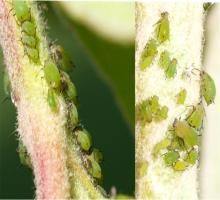
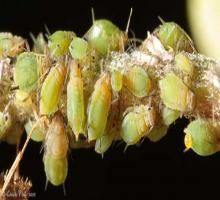
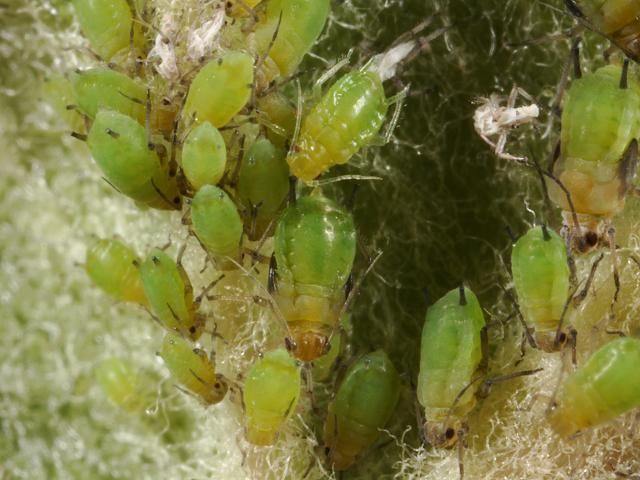
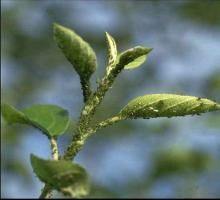
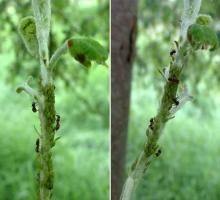
Biology and ecology. The green apple aphid overwinters in the egg stage on relatively thin shoots. The larvae that appear in spring migrate on the underside of the leaves and on the new shoots, transforming into female fundatrix, which by parthenogenetic multiplication give birth to 25-40 larvae. From these larvae develop the sexed forms, which after copulation, lay the eggs that overwinter.
Damage. Adults and larvae of this species attack the apple trees. The aphids colonize at first the flowering and vegetative buds, then the young leaves and fruits. As a consequence of their stings, the shoots no longer develop normally, they twist and the young leaves become deformed, remain small, with a chlorotic appearance. The flower buds fall prematurely, dry out, and their stems do not develop. For a long time, they remain on the branches, in a hanging position. The attacked organs will be covered with their sweet secretions, “honeydew”, on which Capnodium fungi usually grow. Because of this, on different attacked organs, a black coating (sooty mold) is developed, which diminishes photosynthesis.
Management. In order to control the green apple aphid, treatments with specific insecticides must be carried out.
Recommended products
-
You can find products on a different store
Change Store -
You can find products on a different store
Change Store -
You can find products on a different store
Change Store -
You can find products on a different store
Change Store -
You can find products on a different store
Change Store -
You can find products on a different store
Change Store -
You can find products on a different store
Change Store -
You can find products on a different store
Change Store -
You can find products on a different store
Change Store -
You can find products on a different store
Change Store -
You can find products on a different store
Change Store -
You can find products on a different store
Change Store -
You can find products on a different store
Change Store -
You can find products on a different store
Change Store -
You can find products on a different store
Change Store -
You can find products on a different store
Change Store -
You can find products on a different store
Change Store -
You can find products on a different store
Change Store -
You can find products on a different store
Change Store -
You can find products on a different store
Change Store -
You can find products on a different store
Change Store -
You can find products on a different store
Change Store -
You can find products on a different store
Change Store -
You can find products on a different store
Change Store
6. The green peach aphid – Myzodes persicae
Distribution. It is a species widespread in Europe, Asia, North America, Africa, and Australia.
Description. The aptery specimens have a wide oval body, slightly spherical, 1.4-2 mm long, and light green or dark green. The winged forms have a black head and thorax, a yellow-green abdomen, with lateral spots and transverse stripes.
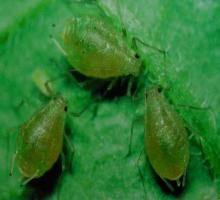
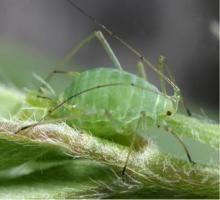
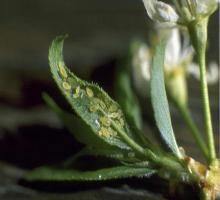
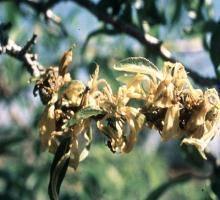
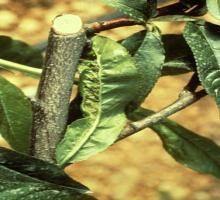
Biology and ecology. The green peach aphid is a migratory species. It overwinters in the egg stage. Winter eggs laid on peaches hatch from the first or second decade of March. The fundatrix forms give birth viviparously to several generations of fundatrigenia forms within 3-4 weeks. The latest generation of winged females migrates to different species of grassy, cultivated, or spontaneous plants. They reproduce by parthenogenesis, viviparously giving birth to several generations of winged and aptery females. In autumn, starting with the third decade of September, and until November, the sexed females appear, which after copulation lay the winter eggs.
Damage. It is a polyphagous species, attacking over 240 species of plants, especially preferring peach trees, apricot trees, tomatoes, eggplants, peppers, potatoes, tobacco, salads, peas, beans, spinach, etc. The aphids form colonies on the underside of the leaves, which sting to suck the intracellular fluid.
Due to the attack, the tissues necrotize, and the leaves twist. If the attack is strong, the leaves turn yellow and dry out. In addition to direct damage, it is also a vector for various viruses, which produce mosaic in some plants (potato, tomatoes).
Management. In order to control the green peach aphid, treatments with specific insecticides must be carried out.
Recommended products
-
You can find products on a different store
Change Store -
You can find products on a different store
Change Store -
You can find products on a different store
Change Store -
You can find products on a different store
Change Store -
You can find products on a different store
Change Store -
You can find products on a different store
Change Store -
You can find products on a different store
Change Store -
You can find products on a different store
Change Store -
You can find products on a different store
Change Store -
You can find products on a different store
Change Store -
You can find products on a different store
Change Store -
You can find products on a different store
Change Store -
You can find products on a different store
Change Store -
You can find products on a different store
Change Store -
You can find products on a different store
Change Store -
You can find products on a different store
Change Store -
You can find products on a different store
Change Store -
You can find products on a different store
Change Store -
You can find products on a different store
Change Store -
You can find products on a different store
Change Store -
You can find products on a different store
Change Store -
You can find products on a different store
Change Store -
You can find products on a different store
Change Store -
You can find products on a different store
Change Store
7. The black cherry aphid – Myzus cerasi
Prevalence. The black cherry aphid, Myzus cerasi, is a species widespread worldwide. It can be found from the steppe area to the sub-mountainous area, causing significant damage in cherry or sour cherry orchards..
Description. The aptery forms and the winged forms have a spherical, blackish-brown, shiny body.
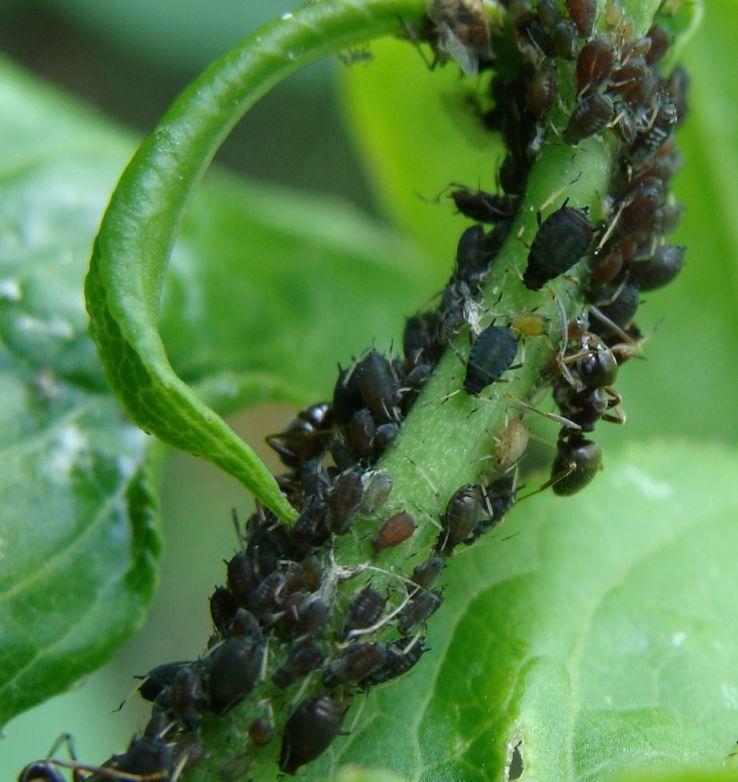
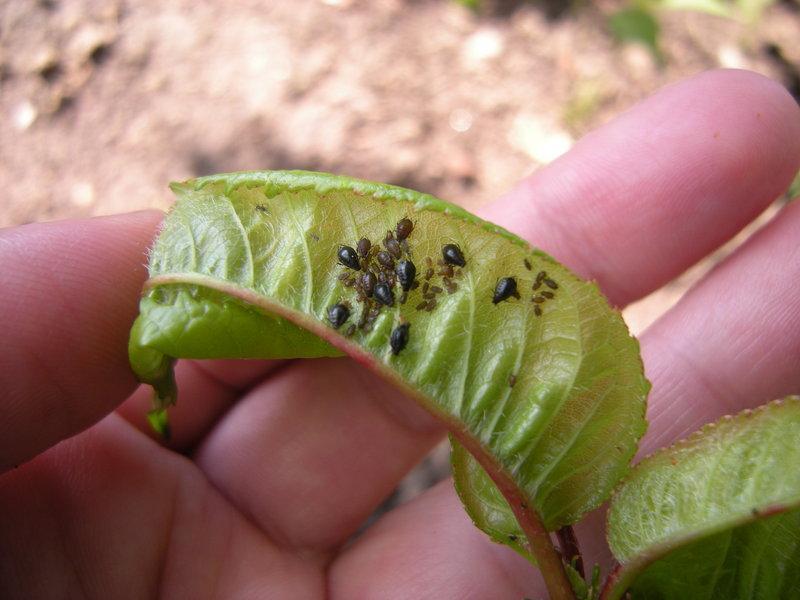
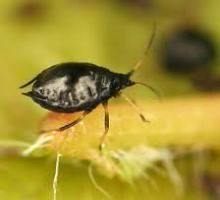
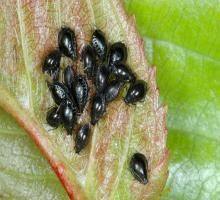
Biology and ecology. It overwinters in the egg stage on the cherry bark. Starting with April, the fundatrix forms appear, moving on the branches and the underside of the leaves. They sting and suck the intracellular fluid from the tissues. In autumn, the winged sexuparous forms appear, which return to the primary host. They give birth to males and females, and after mating, the females lay the eggs that overwinter.
Damage. The black cherry aphid is a common species in cherry and sour cherry orchards, causing great damage to seedbeds. They colonize the leaves and tips of the cherry shoots in early spring. In the case of large infestations, the leaves or even the flowers and fruits can become completely covered by black aphid colonies. After the attack, the leaves become twisted, turn brown and dry, taking the form of bouquets. The shoots become curved. In the case of strong infestations, the trees stagnate, and the fruiting strength of the trees decreases.
Management. In order to control the black cherry aphid, treatments with specific insecticides must be carried out.
Recommended products
-
You can find products on a different store
Change Store -
You can find products on a different store
Change Store -
You can find products on a different store
Change Store -
You can find products on a different store
Change Store -
You can find products on a different store
Change Store -
You can find products on a different store
Change Store -
You can find products on a different store
Change Store -
You can find products on a different store
Change Store -
You can find products on a different store
Change Store -
You can find products on a different store
Change Store -
You can find products on a different store
Change Store -
You can find products on a different store
Change Store -
You can find products on a different store
Change Store -
You can find products on a different store
Change Store -
You can find products on a different store
Change Store -
You can find products on a different store
Change Store -
You can find products on a different store
Change Store -
You can find products on a different store
Change Store -
You can find products on a different store
Change Store -
You can find products on a different store
Change Store -
You can find products on a different store
Change Store -
You can find products on a different store
Change Store -
You can find products on a different store
Change Store -
You can find products on a different store
Change Store














































































































































































































































































































































































































































